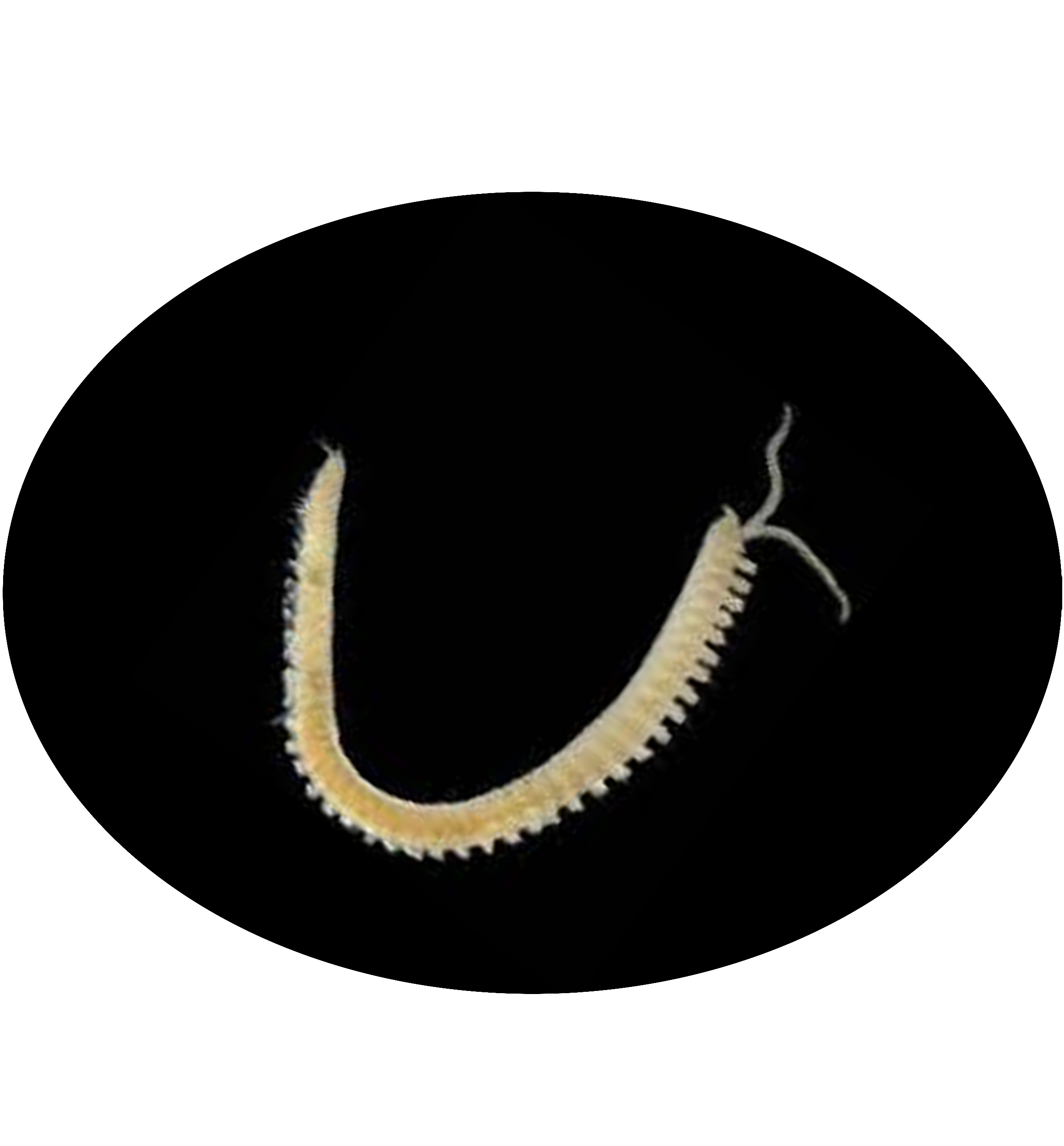
Lindaspio polybranchiata is a species of polychaete worm in the family Spionidae. It is known for its unique multiple branchial filaments, which aid in respiration and feeding. This species is typically found in deep-sea environments, often inhabiting soft sediments where it constructs burrows. Like other spionids, it uses its specialized palps to collect organic particles from the surrounding water and sediment, serving as a deposit feeder. Its adaptations to low-oxygen environments and its role in benthic ecosystems make it an important species for studying deep-sea biodiversity and ecological processes.
Animalia (Kingdom); Annelida (Phylum); Polychaeta (Class); Sedentaria (Subclass); Canalipalpata (Infraclass); Spionida (Order); Spioniformia (Suborder); Spionidae (Family); Lindaspio (Genus); Lindaspio polybranchiata (Species)
Lindaspio polybranchiata Sui, Dong, Wu & Li, 2023
1. Sui J, Dong D, Wu X, et al. A new species of the genus Lindaspio Blake & Maciolek, 1992 (Annelida, Spionidae) from a cold seep near Hainan Island, China[J]. ZooKeys, 2023, 1153: 105. (Sui et al., 2023)
Total length 55 mm, maximum width 4 mm, including chaetae. More than 350 crowded chaetigers. Color pale in alcohol. Prostomium incised, developed into two frontal lobes or weak horns; caruncle present or absent; occipital tentacle absent. Peristomial wings absent. Notopodia of chaetigers 2–4 with fascicles of heavy spines. Anterior neuropodial spines present. Dorsal branchiae starting from chaetiger 2; ventral branchiae starting from an anterior segment, branchiae closely associated with parapodial lamellae, continuing to posterior end. Chaetiger 1 reduced, with notopodia reduced to single lamellae lacking notochaetae. Following notopodia and neuropodia with capillaries and hooded hooks. Pygidium simple, conical, lacking cirri.
The species is so named because it has more neuropodial branchiae than the congeners.
Lingshui cold seep cruise, Faxian Dive 252, 1758 m, 17°37'N, 111°03'E, coll. crew of R/V Kexue
| Species | Phylum | Common Name | Ecosystem | Depth | Habitat | NCBI Taxonomy ID |
|---|---|---|---|---|---|---|
| Lindaspio polybranchiata | Annelida | - | Cold seep | 1,700 | Lingshui Cold Seep | 3032291 |
| Genome Assembly | Genome Size | Assembly level | Released year | WGS accession | Submitter | BioProject | BUSCO completeness (%) | Scaffold/Contig N50 (kb) | GC content (%) | Repeat Rate (%) | Gene Number |
|---|---|---|---|---|---|---|---|---|---|---|---|
| - | 1.66Gb | Contig | 2025 | - | - | PRJNA1188207 | 90.10 | - | - | - | 27,746 |
| Title | Journal | Pubmed ID |
|---|---|---|
| Degenerated vision, altered lipid metabolism, and expanded chemoreceptor repertoires enable Lindaspio polybranchiata to thrive in deep-sea cold seeps | BMC Biology | 39806408 |
| Annotation ID | Description | Type | Subtype | GeneRatio | Evolution Type | P-value | Q-value |
|---|---|---|---|---|---|---|---|
| GO:0031490 | chromatin DNA binding | GO | Molecular Function | 21 | expanded | 4.29E-11 | 1.22E-09 |
| GO:0061582 | intestinal epithelial cell migration | GO | Biological Process | 9 | expanded | 4.59E-11 | 3.61E-09 |
| GO:0097179 | protease inhibitor complex | GO | Cellular Component | 11 | expanded | 5.04E-11 | 1.68E-09 |
| GO:1904090 | peptidase inhibitor complex | GO | Cellular Component | 11 | expanded | 5.04E-11 | 1.68E-09 |
| GO:0004252 | serine-type endopeptidase activity | GO | Molecular Function | 21 | expanded | 5.41E-11 | 1.44E-09 |
| GO:0006636 | unsaturated fatty acid biosynthetic process | GO | Biological Process | 15 | expanded | 5.86E-11 | 4.48E-09 |
| GO:0032787 | monocarboxylic acid metabolic process | GO | Biological Process | 52 | expanded | 6.03E-11 | 4.50E-09 |
| GO:1904029 | regulation of cyclin-dependent protein kinase activity | GO | Biological Process | 20 | expanded | 7.00E-11 | 5.06E-09 |
| GO:0045911 | positive regulation of DNA recombination | GO | Biological Process | 13 | expanded | 7.12E-11 | 5.06E-09 |
| GO:0006767 | water-soluble vitamin metabolic process | GO | Biological Process | 20 | expanded | 8.57E-11 | 5.95E-09 |
| GO:0005576 | extracellular region | GO | Cellular Component | 85 | expanded | 1.42E-10 | 4.34E-09 |
| GO:0046456 | icosanoid biosynthetic process | GO | Biological Process | 15 | expanded | 1.51E-10 | 1.03E-08 |
| GO:0000788 | nuclear nucleosome | GO | Cellular Component | 13 | expanded | 1.64E-10 | 4.64E-09 |
| GO:0016775 | phosphotransferase activity, nitrogenous group as acceptor | GO | Molecular Function | 7 | expanded | 2.04E-10 | 4.95E-09 |
| GO:0003943 | N-acetylgalactosamine-4-sulfatase activity | GO | Molecular Function | 9 | expanded | 2.09E-10 | 4.95E-09 |
| GO:0050907 | detection of chemical stimulus involved in sensory perception | GO | Biological Process | 14 | expanded | 2.83E-10 | 1.87E-08 |
| GO:0006749 | glutathione metabolic process | GO | Biological Process | 17 | expanded | 2.88E-10 | 1.87E-08 |
| GO:0000320 | re-entry into mitotic cell cycle | GO | Biological Process | 8 | expanded | 3.20E-10 | 2.03E-08 |
| GO:0017171 | serine hydrolase activity | GO | Molecular Function | 23 | expanded | 3.34E-10 | 7.48E-09 |
| GO:0051290 | protein heterotetramerization | GO | Biological Process | 13 | expanded | 3.45E-10 | 2.15E-08 |

